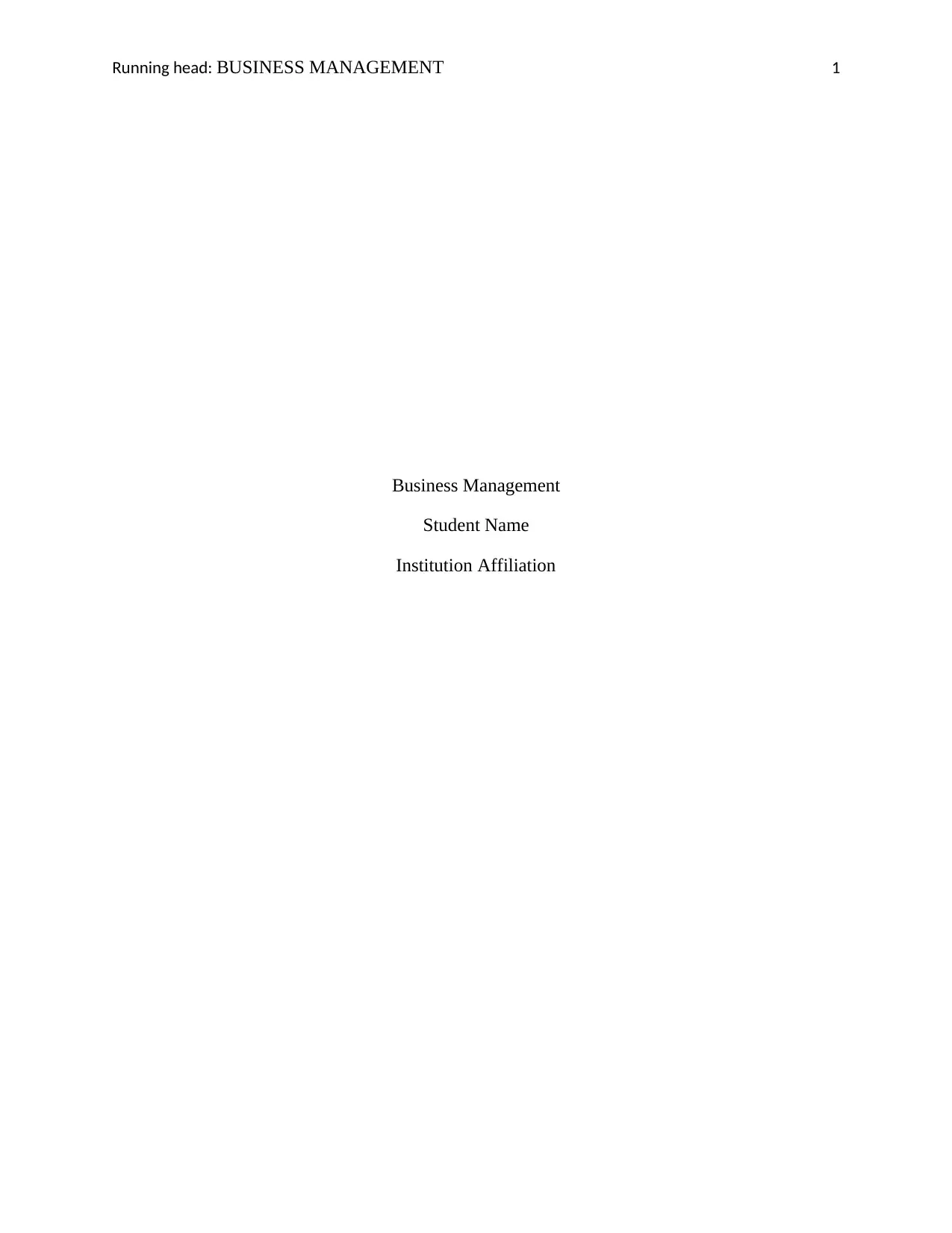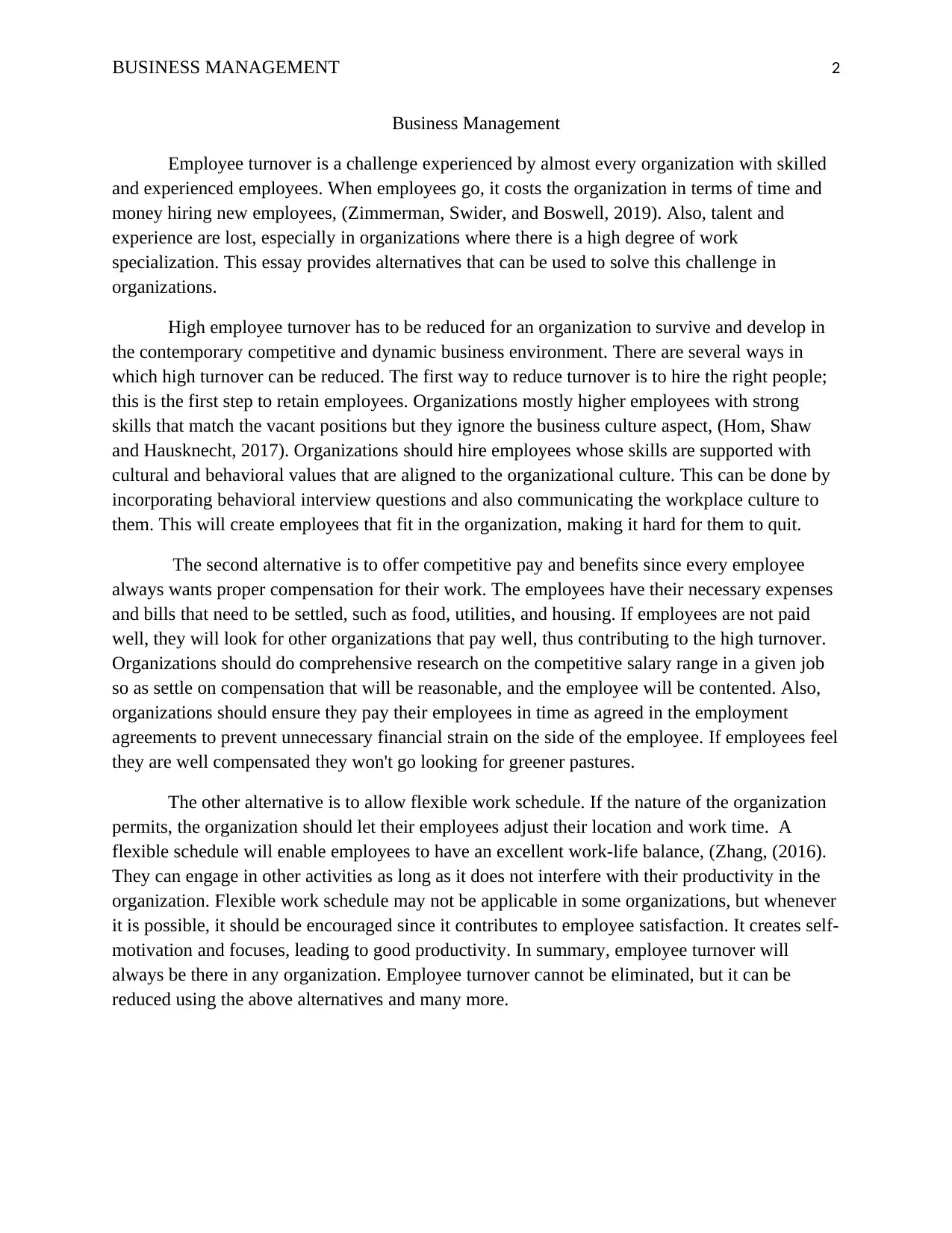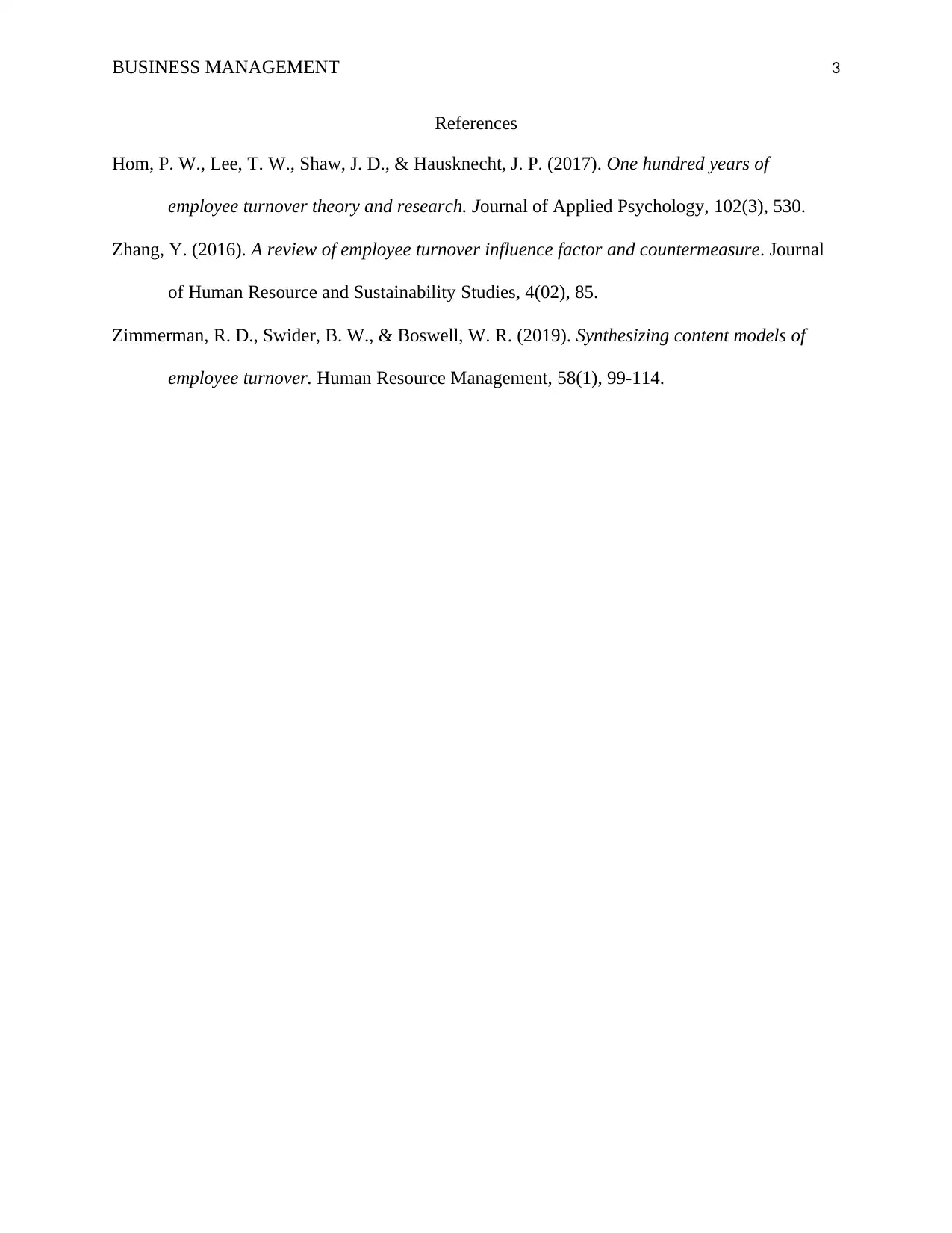Business Management Essay: Addressing Employee Turnover Challenges
VerifiedAdded on 2022/11/16
|3
|646
|317
Essay
AI Summary
This essay examines the persistent challenge of employee turnover in organizations. It emphasizes the financial and operational costs associated with losing skilled employees. The essay proposes several strategies to mitigate this issue, including the importance of hiring individuals whose values align with the organizational culture, offering competitive compensation and benefits to attract and retain talent, and implementing flexible work schedules to improve work-life balance. The essay underscores that while complete elimination of employee turnover is unrealistic, strategic approaches can significantly reduce its impact and enhance organizational stability and growth. The essay uses sources to support the arguments and provide a detailed analysis of the topic.
1 out of 3










![[object Object]](/_next/static/media/star-bottom.7253800d.svg)